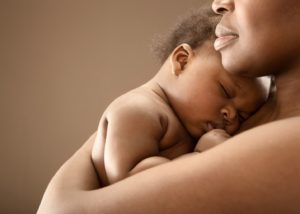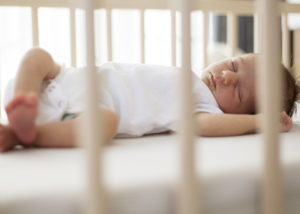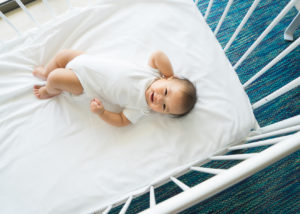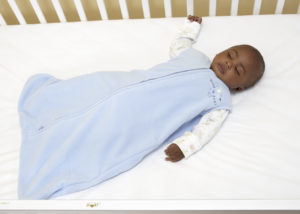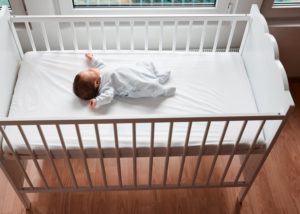How Do I Know If It’s Safe for Sleep?
The American Academy of Pediatrics (AAP) recommends a firm, flat sleep surface for your baby. A crib, portable crib, bassinet, or play yard that follows the safety standards of the Consumer Product Safety Commission (CPSC) is recommended. The mattress should be covered by a tightly fitted sheet with no other bedding or soft items in the sleep area.
When using a crib, portable crib, bassinet, or play yard, it is recommended that you:
- Check CPSC’s recall list to make sure that it has not been recalled.
- Set it up according to the manufacturer’s instructions.
- Check it often to make sure all the hardware is secured tightly and that no parts are damaged, loose or missing.
- Make sure the sheet isn’t too tight. The sheet should not cause the edges of the mattress to curl or pull up. If you have difficulty finding a sheet that fits properly, contact the manufacturer.
- Use the correct mattress and check its fit regularly.
You can find more information on the CPSC Safe to Sleep® Crib Information Center.
Tips to Stay Calm
Your baby isn’t sleeping. You’re not sleeping. Your baby’s crying and you’re reaching your breaking point. We’ve all been there.
What about Choking?
Why don’t babies choke when they are on their back? Babies are actually safer on their back. Learn why.
Myths & Facts
Debunk the myths about what is sabotaging your sleep and highlight habits that potentially risk your baby's safety.
What NOT to Do
Now that you know where your baby should sleep, do you know where your baby shouldn’t sleep?
What Is Safe Sleep
We get a lot of questions about whether a product is safe for sleep for your baby. When considering a product, there are some questions you should ask.
Safe Sleep Spaces
A crib, portable crib, bassinet, or play yard that follows the safety standards of the Consumer Product Safety Commission (CPSC) is recommended.
Since 2010, 810 babies have died in Michigan due to sleep-related deaths. In 2015, 159 infants in Michigan died due to sleep-related deaths.
Nearly 44% of infants who died of sleep-related causes were found on their stomach and 11% were found on their side.
In 2015, approximately 60% of the infants that died involved suffocation hazards present in the sleep environment, such as blankets (84%), pillows (25%), bumper pads (15%) and stuffed toys (5%).


